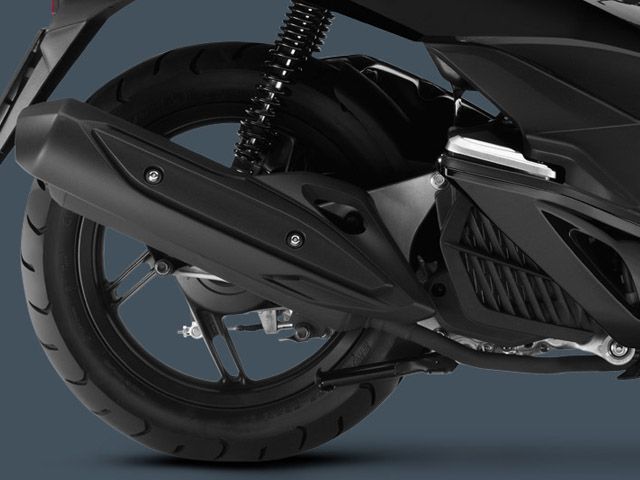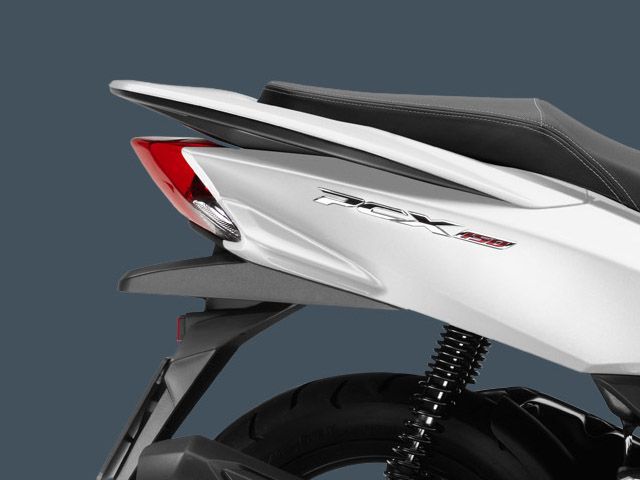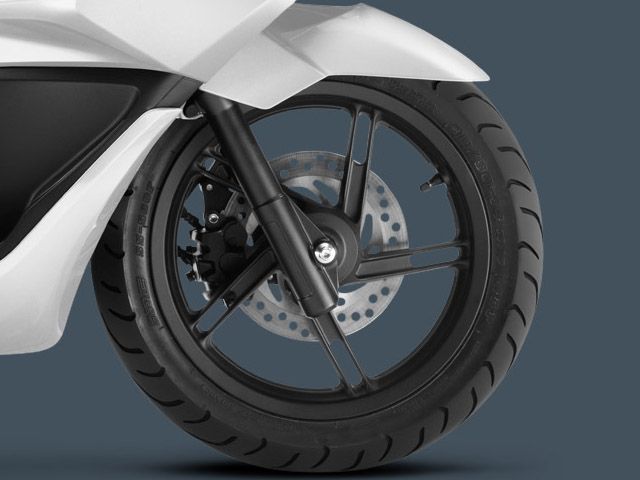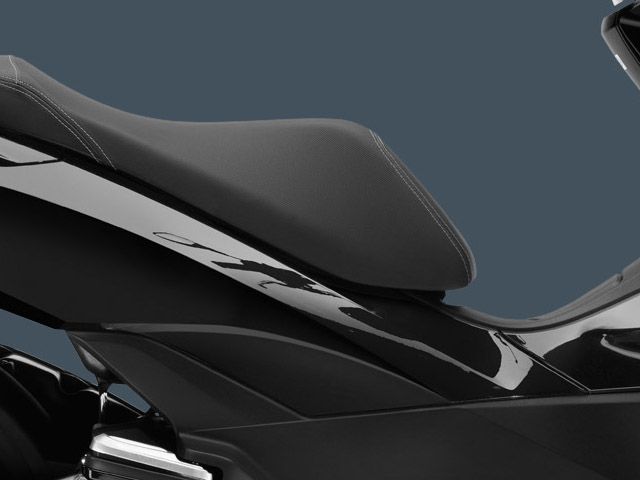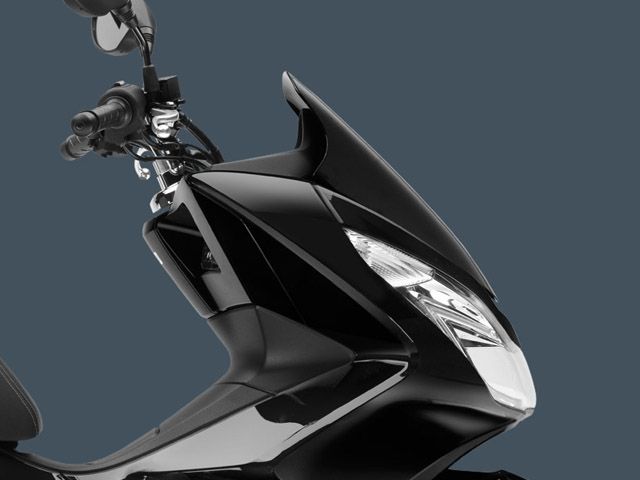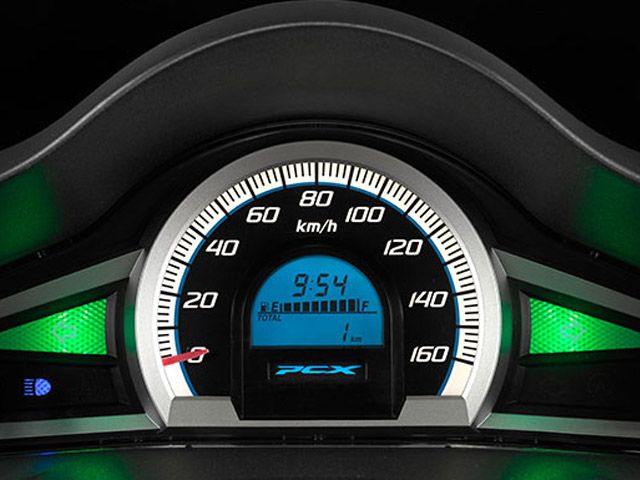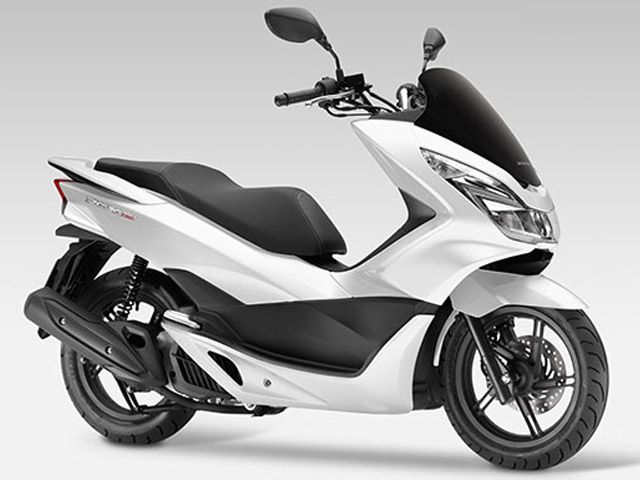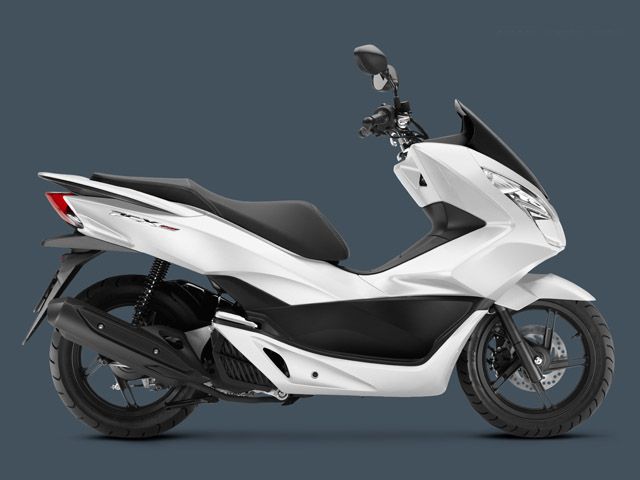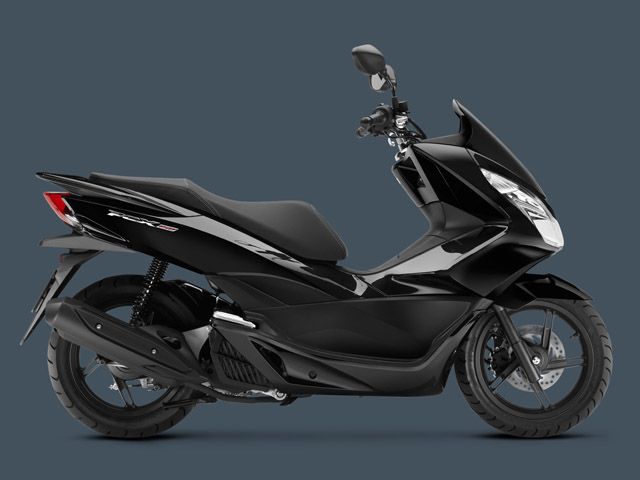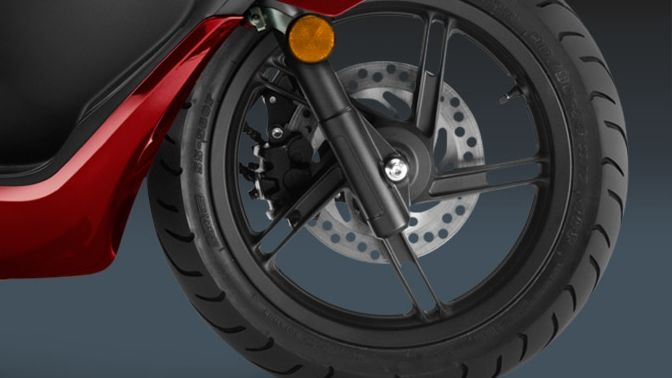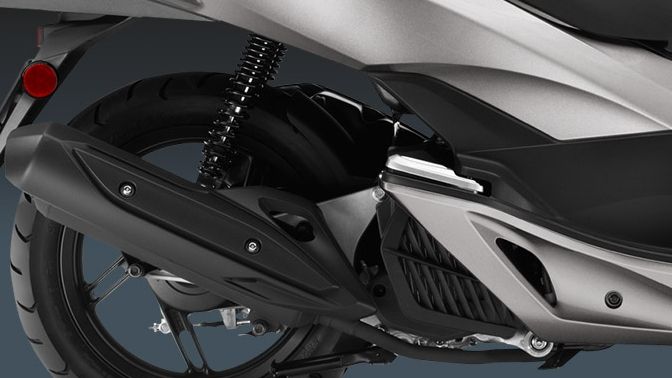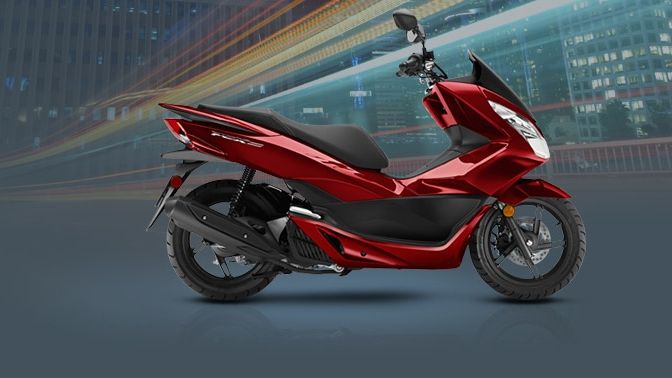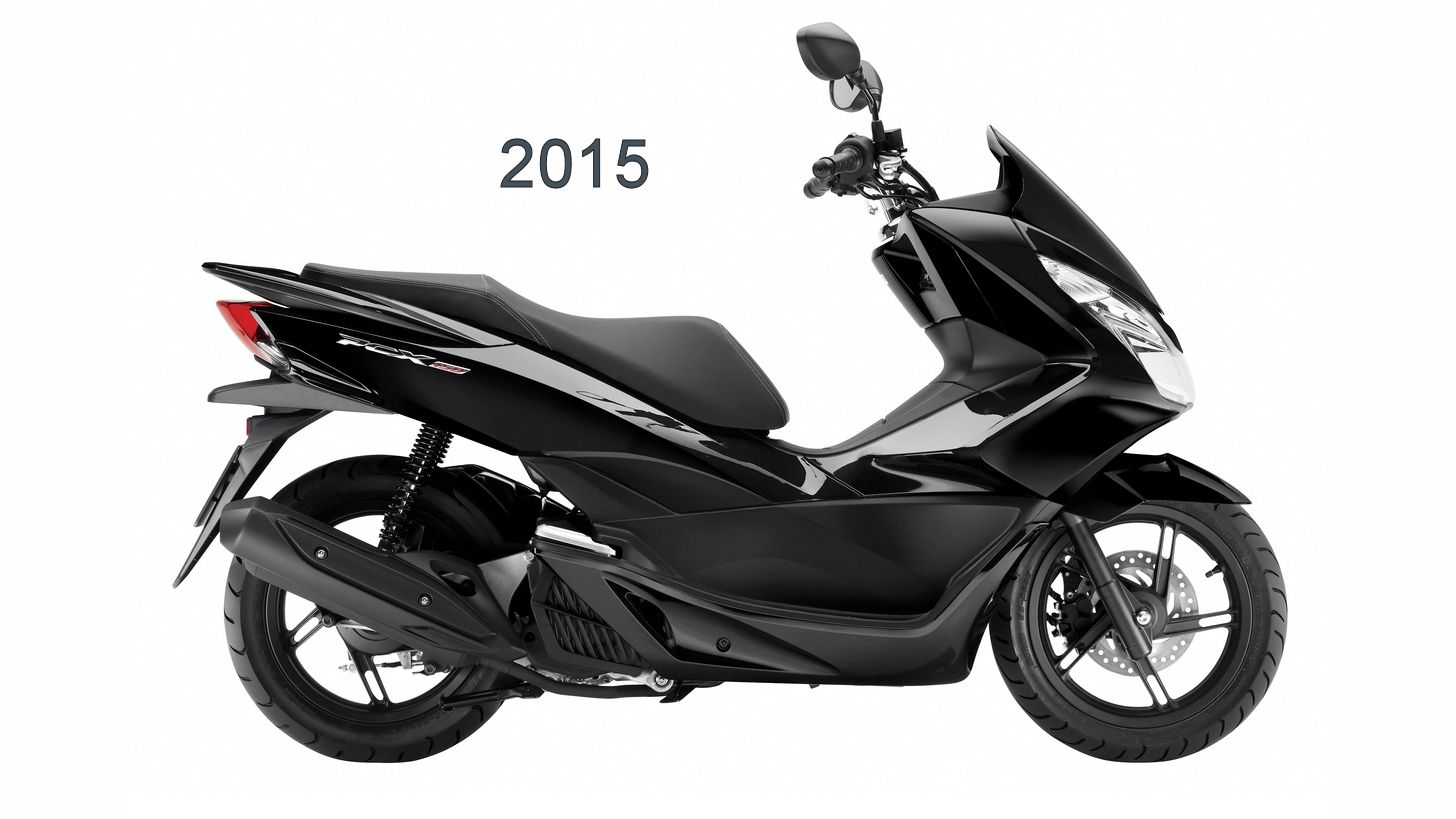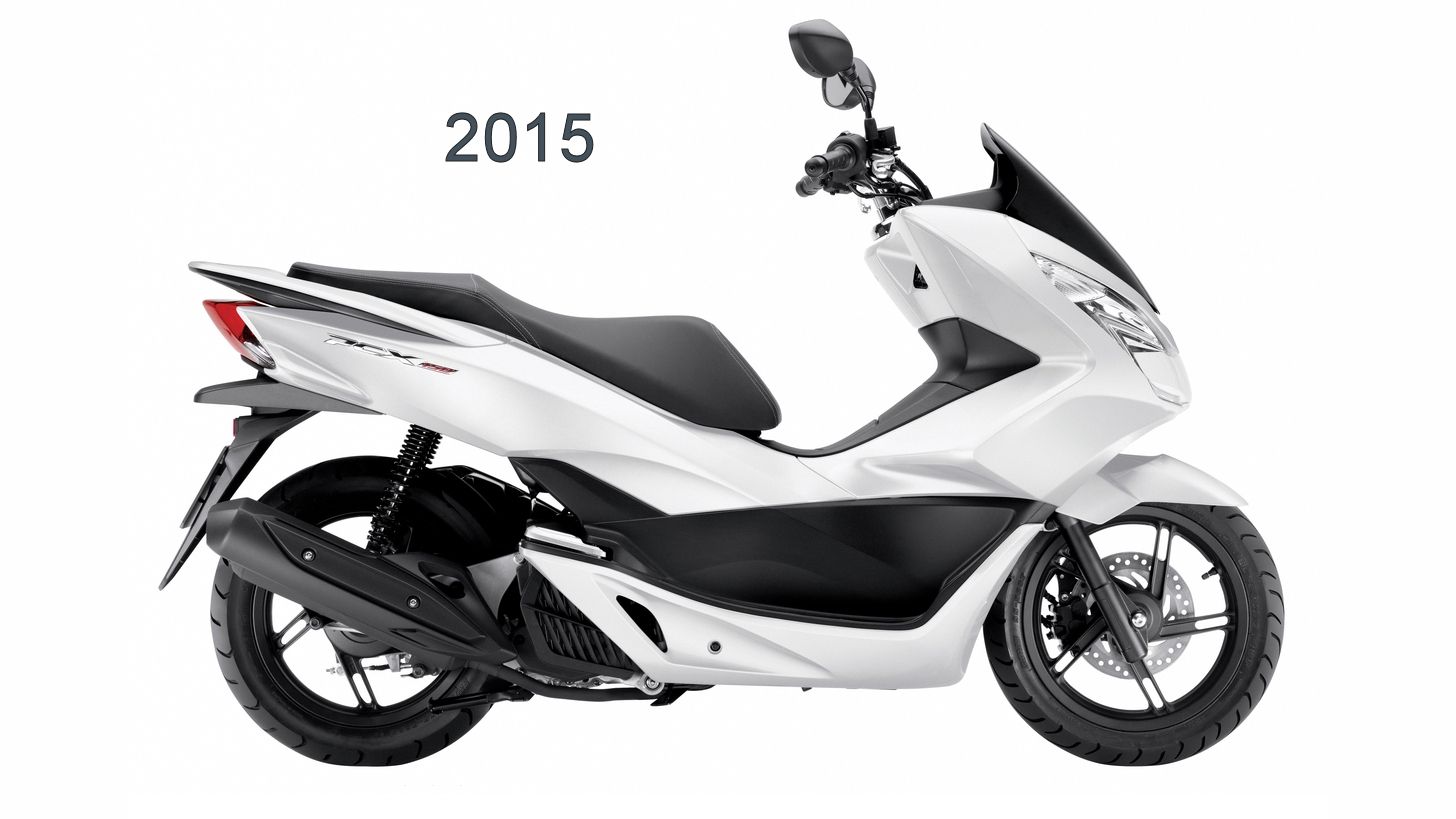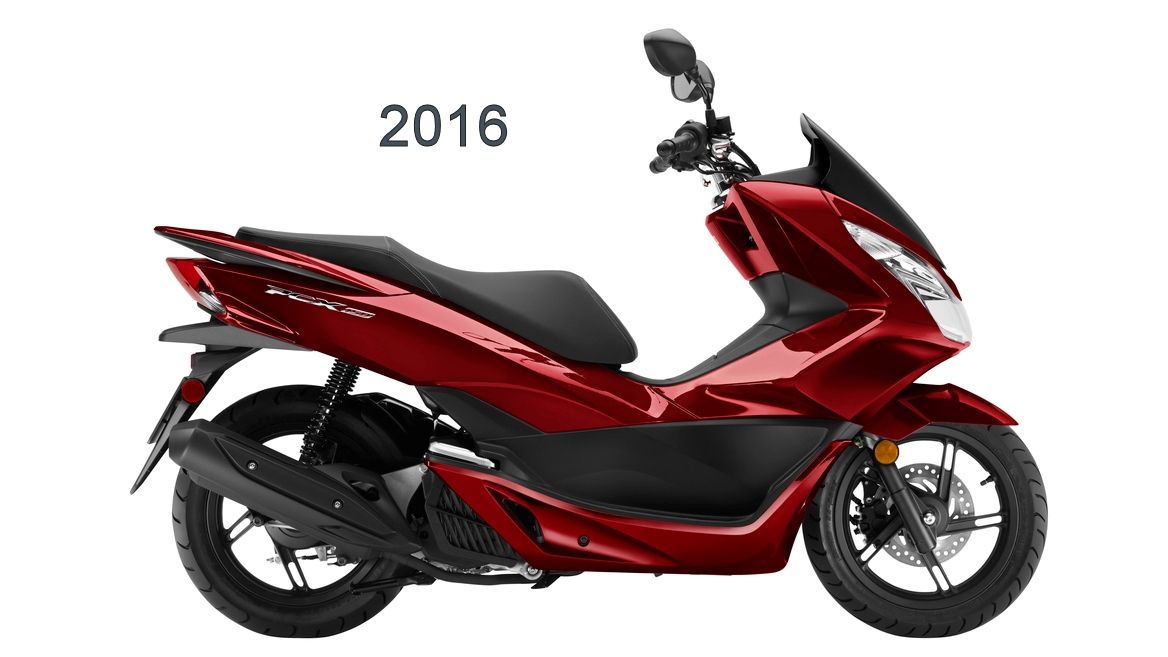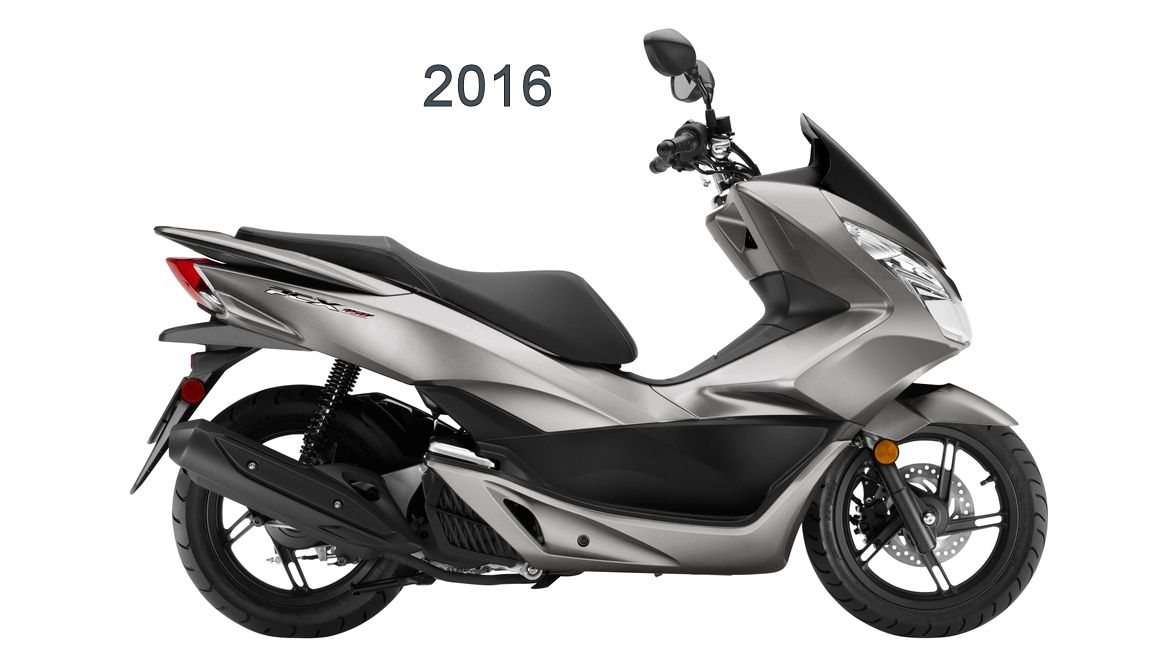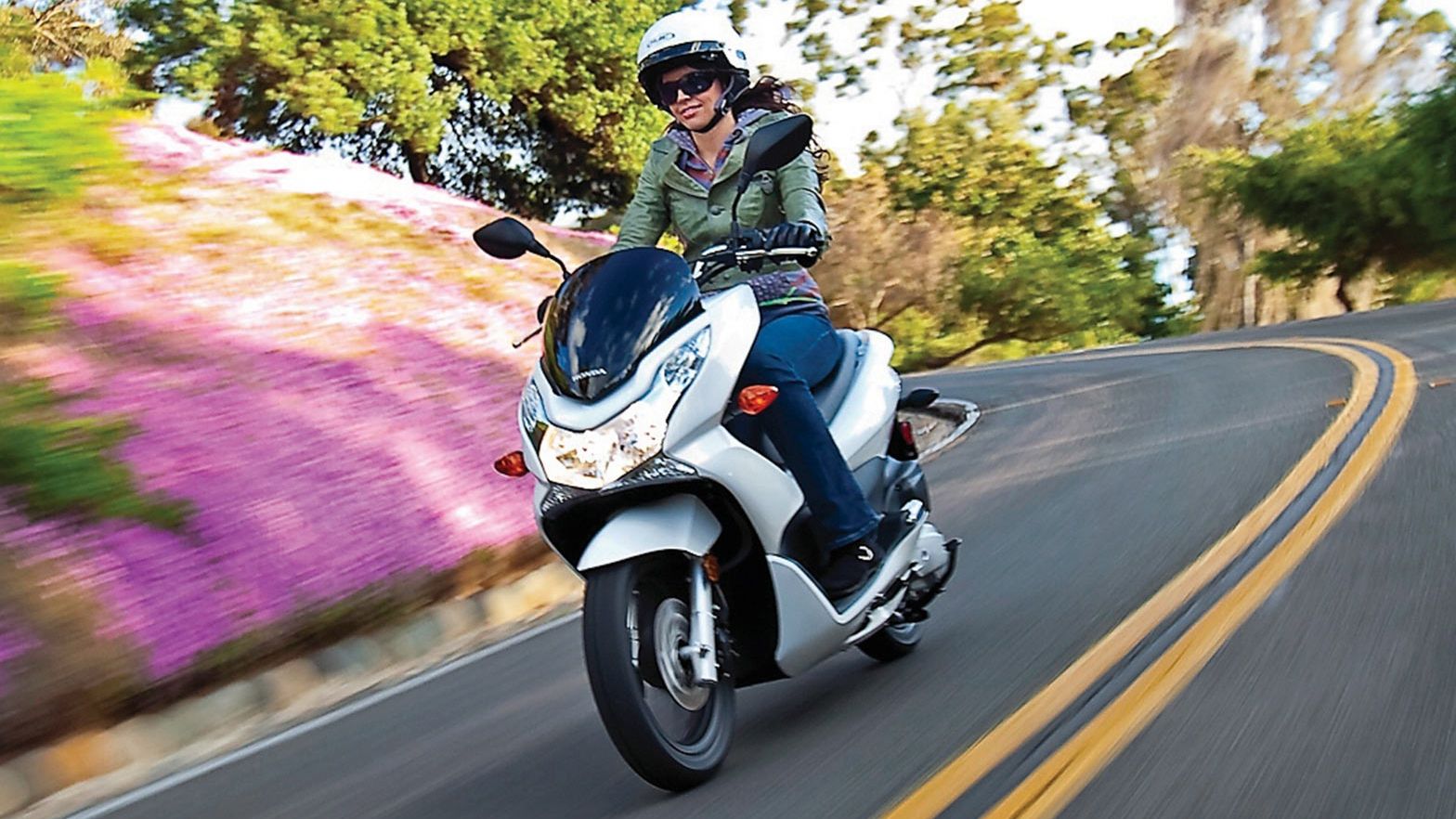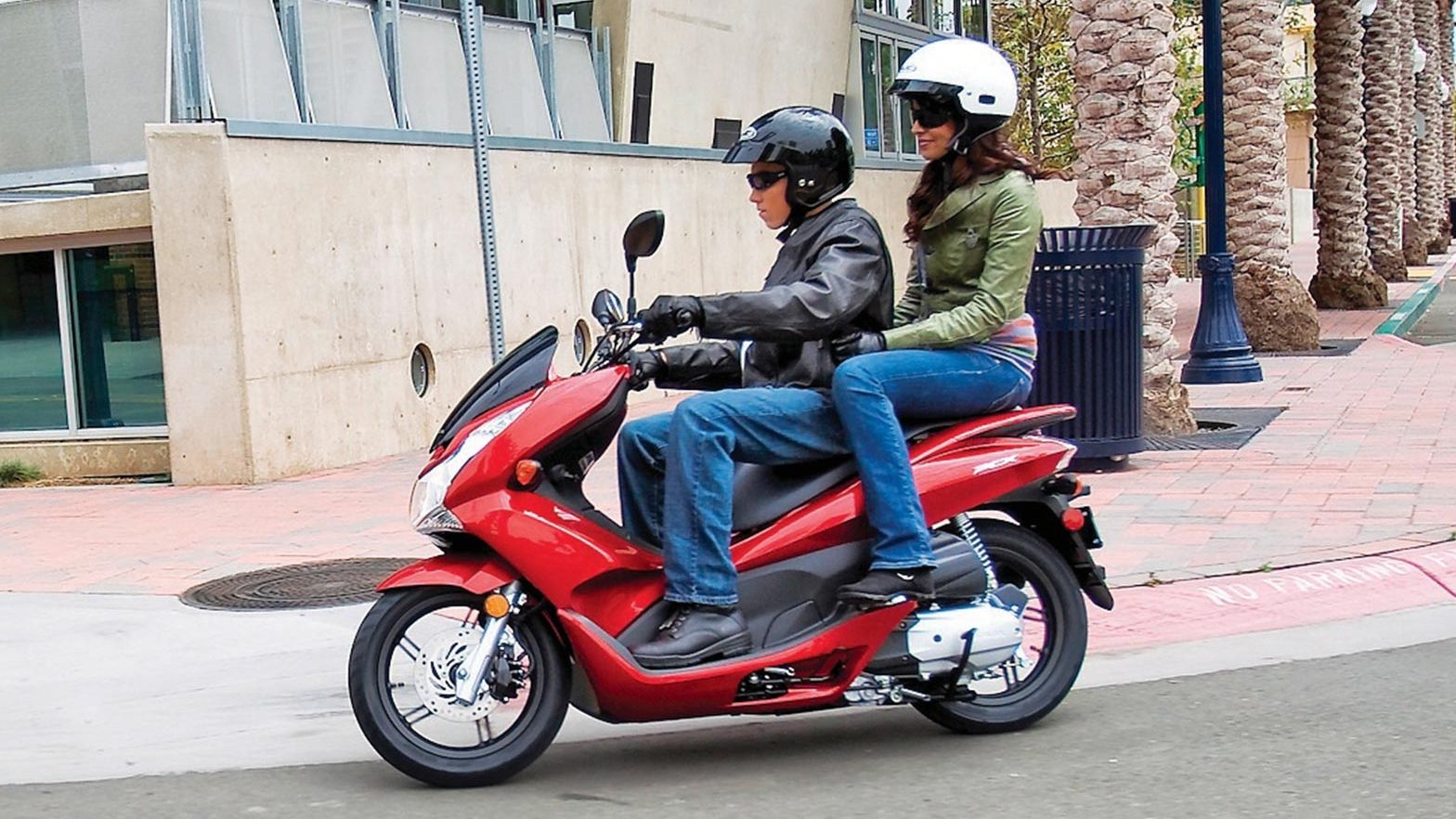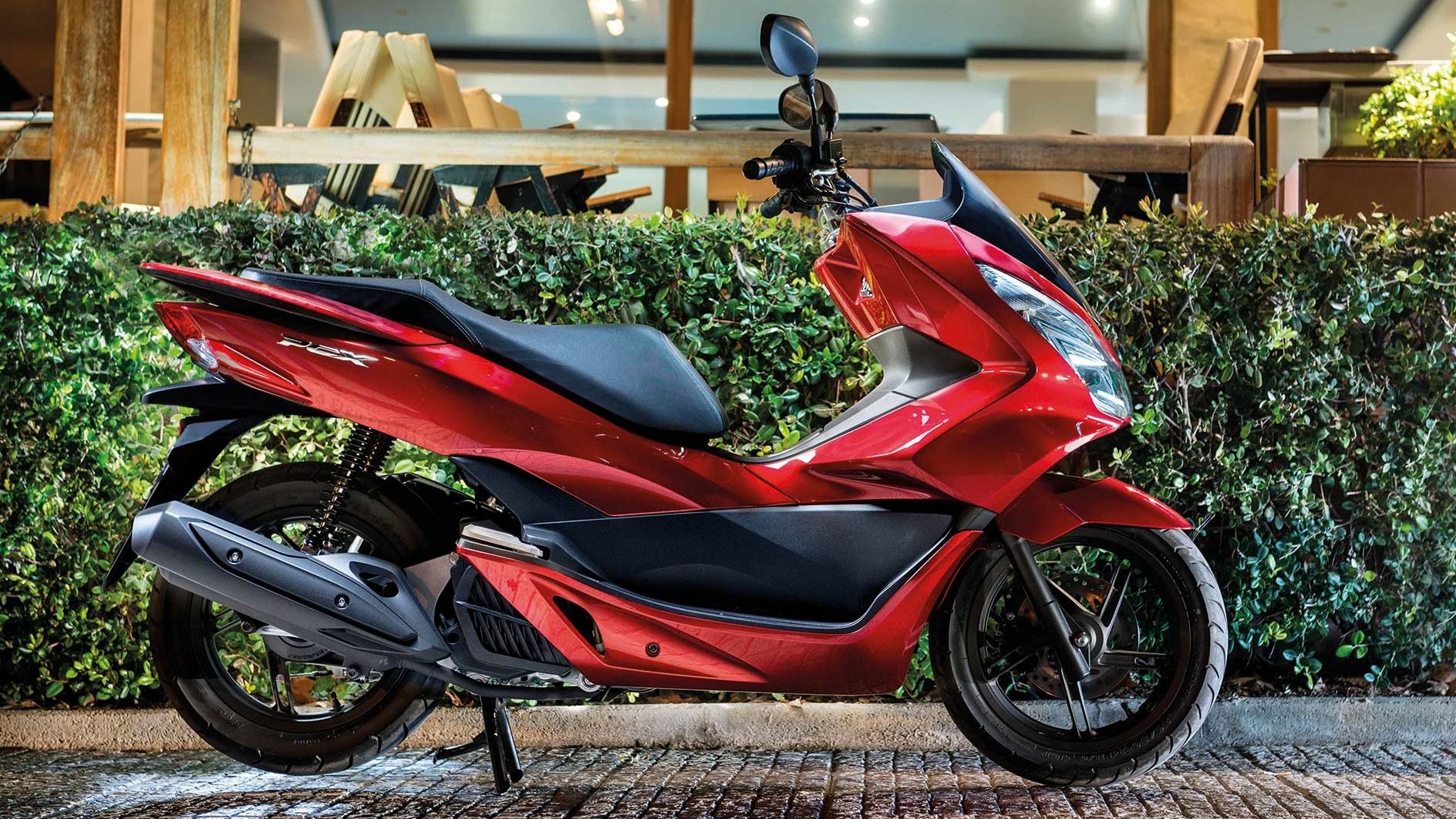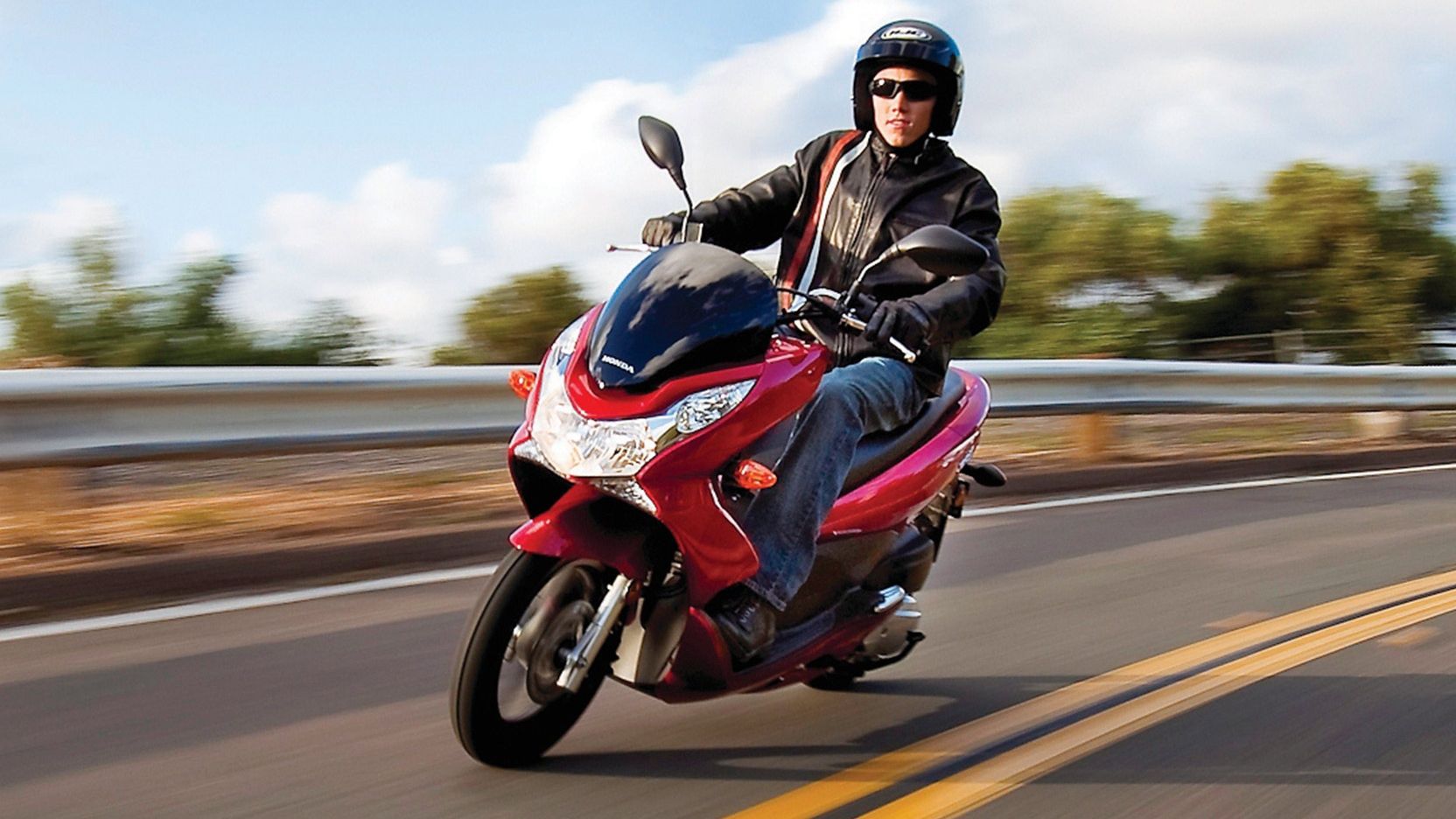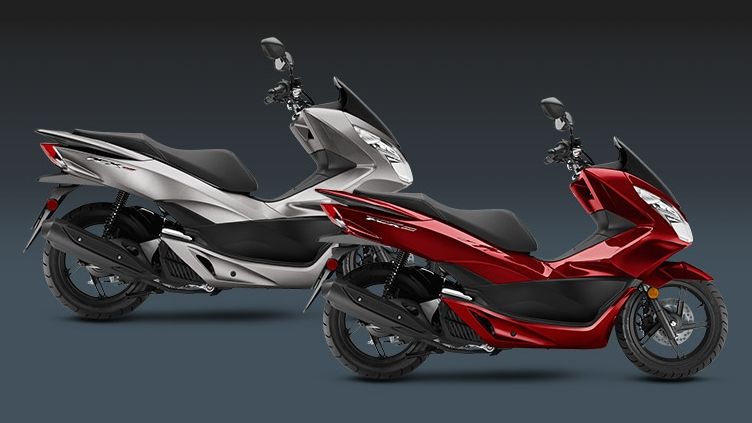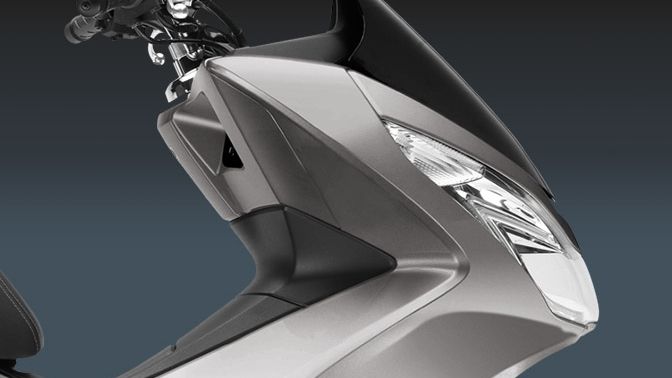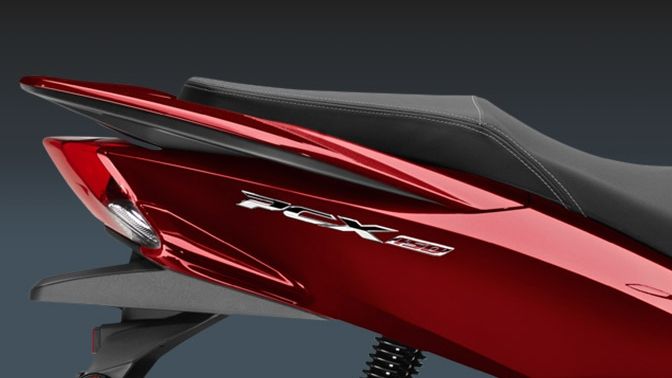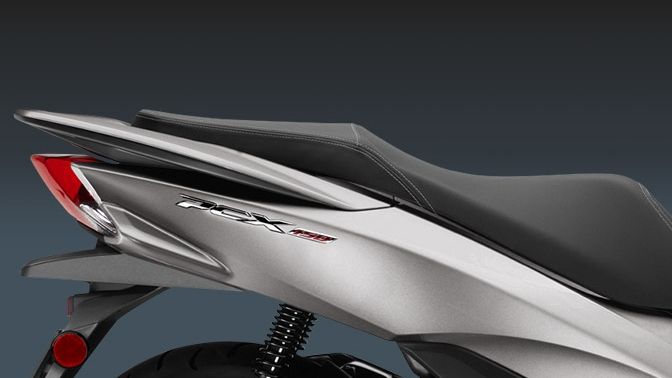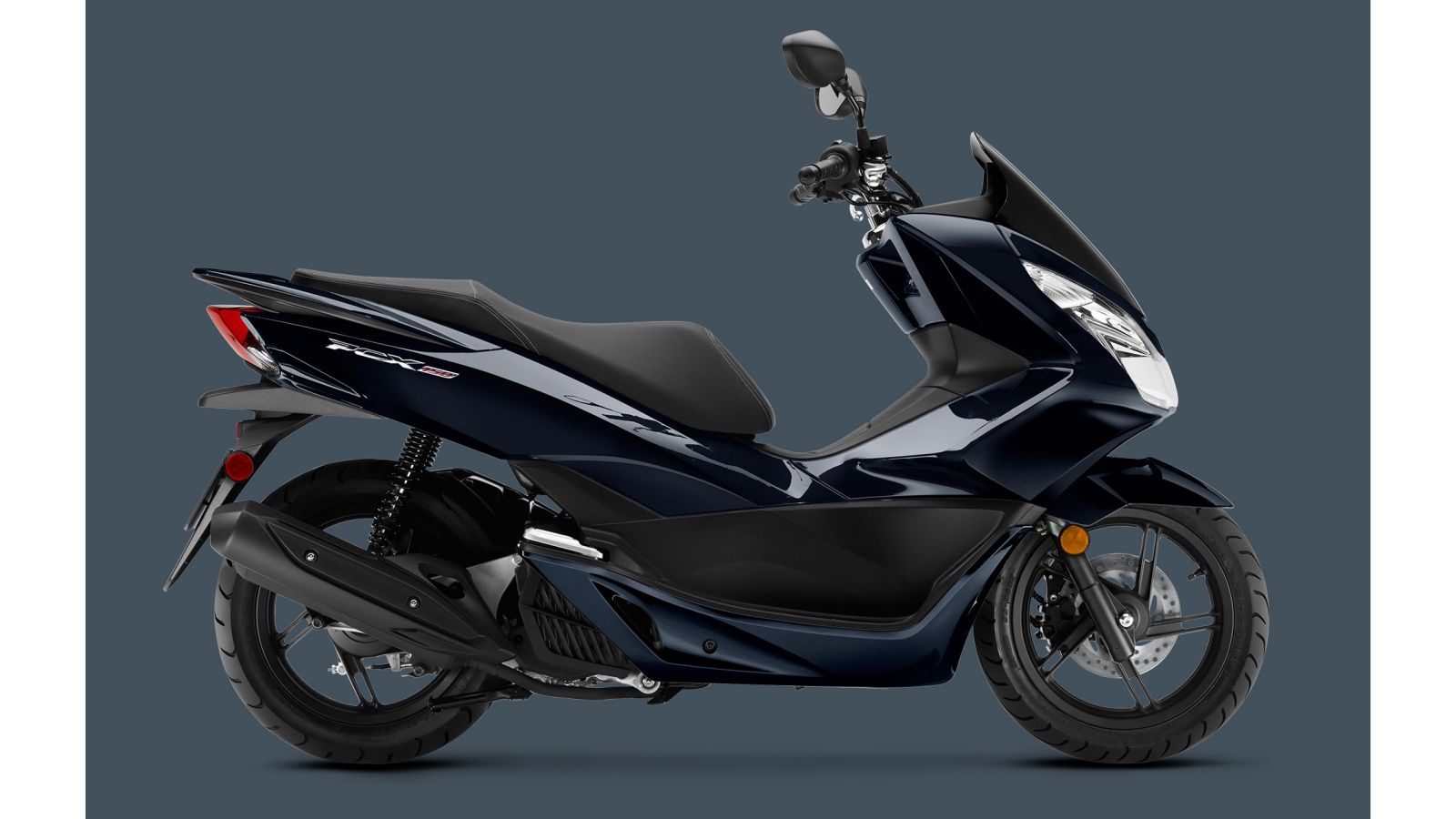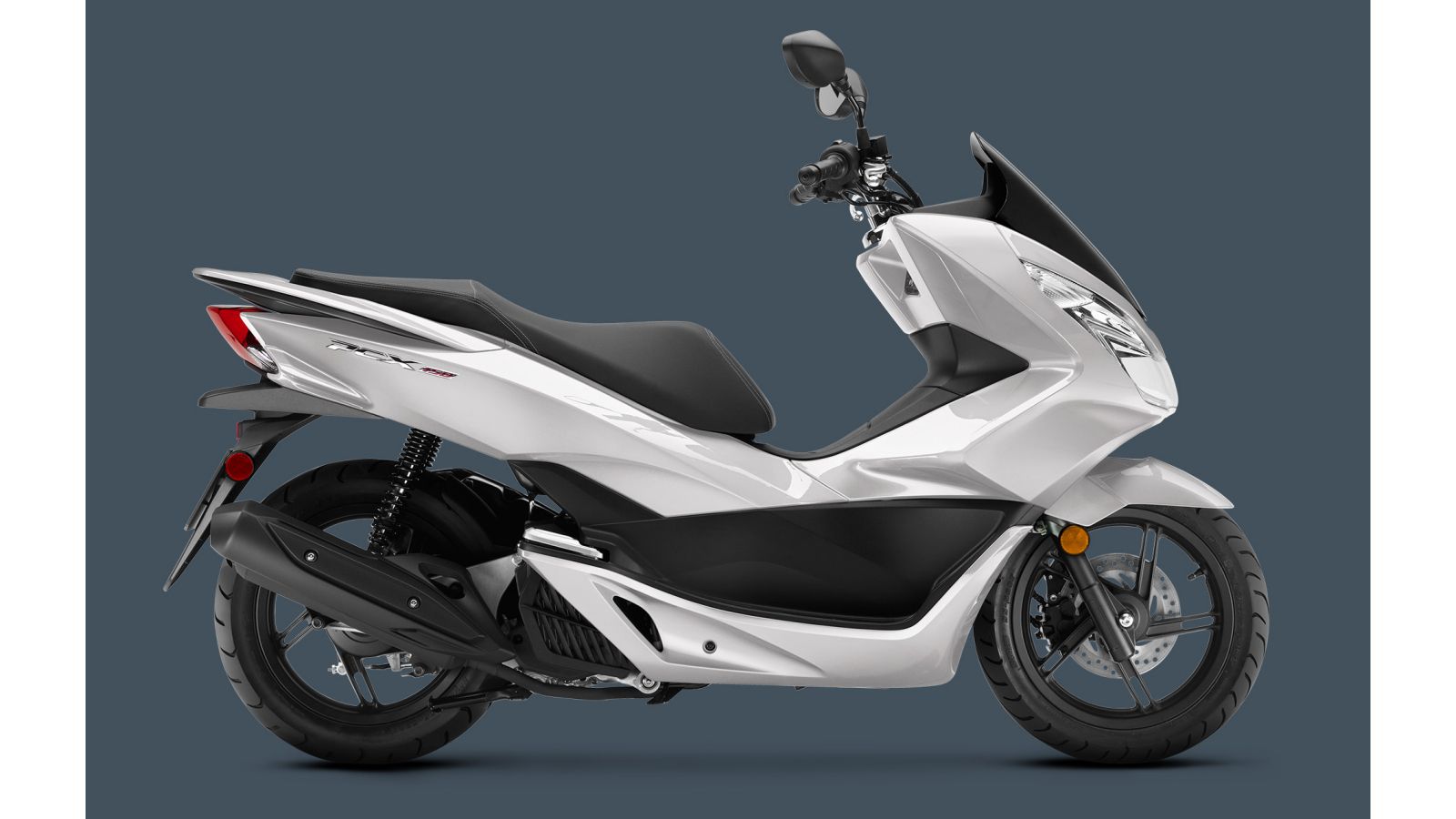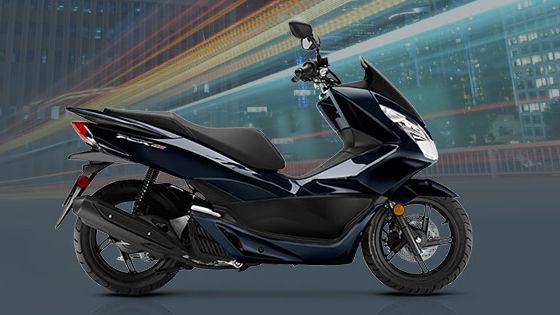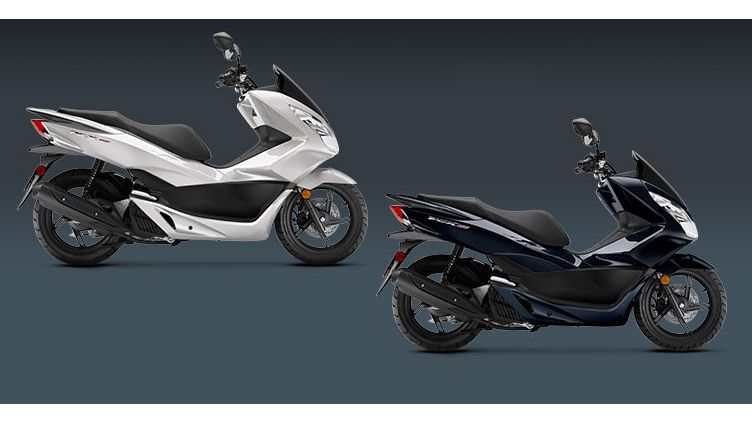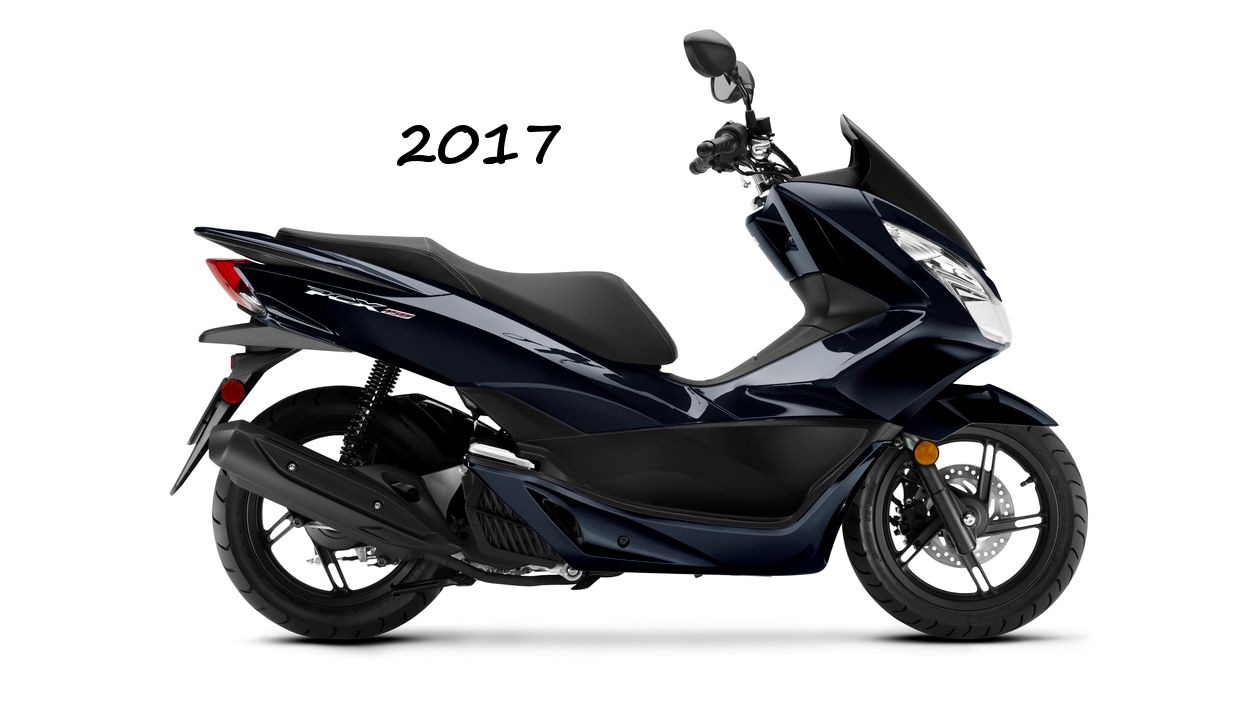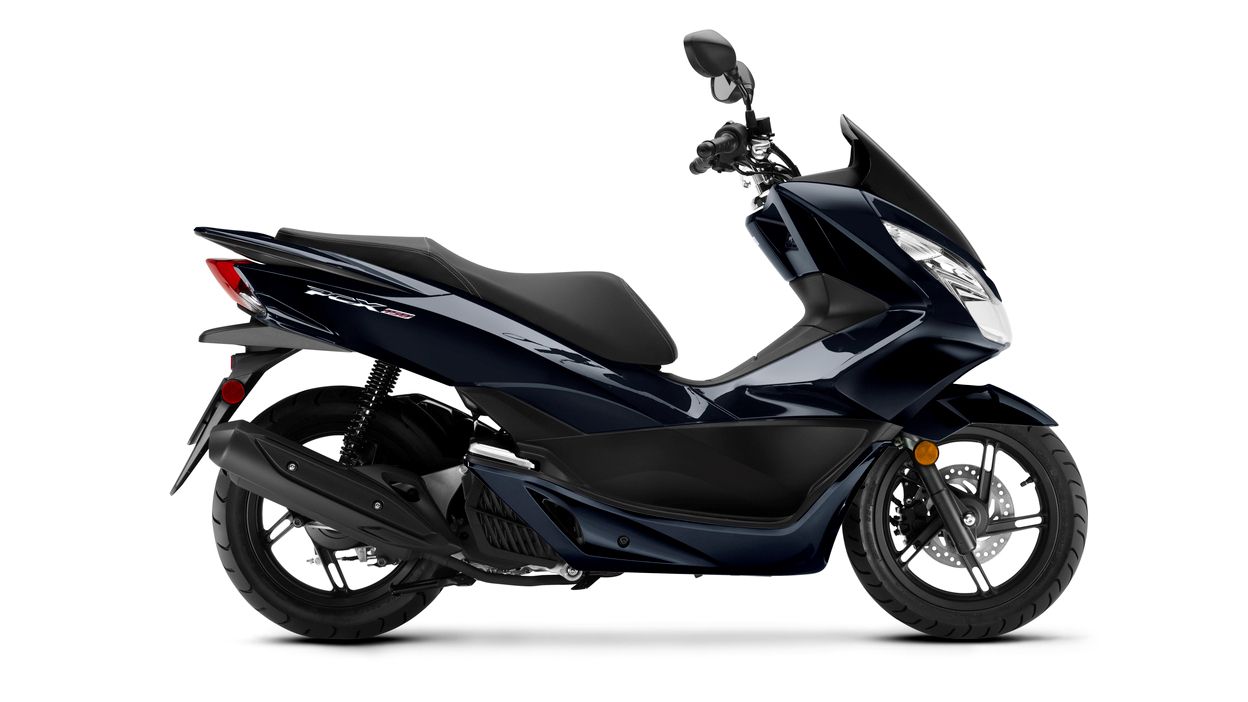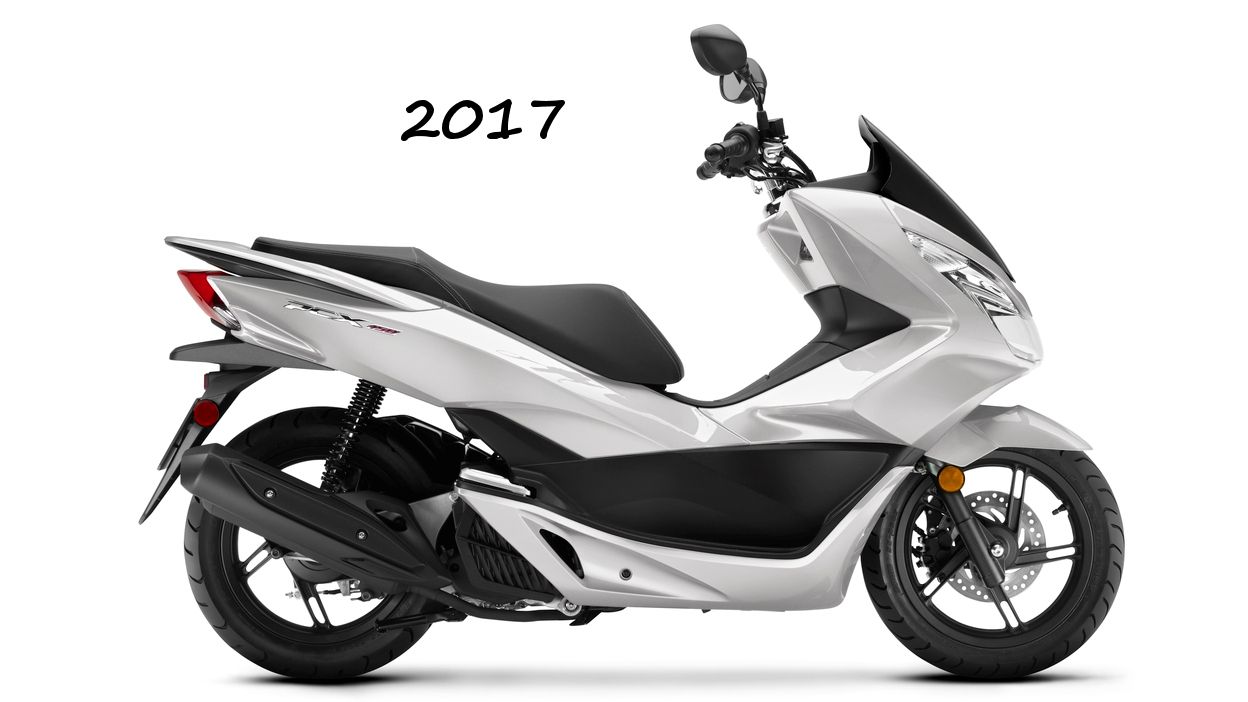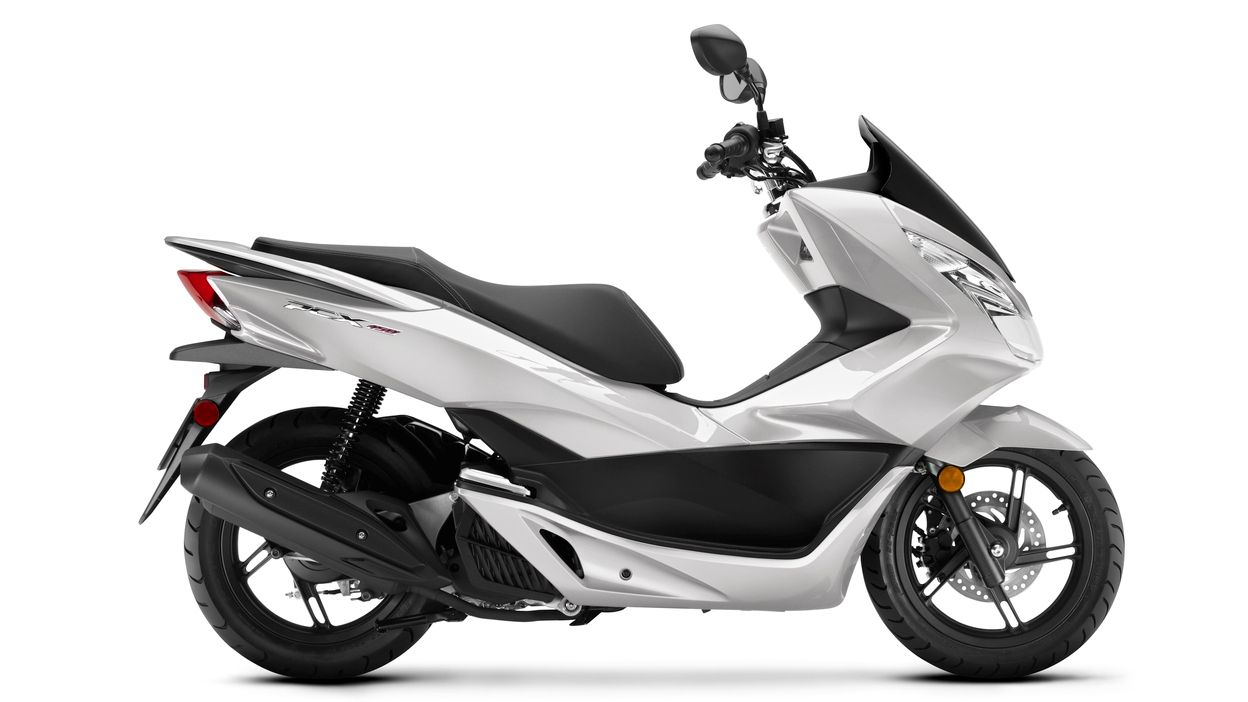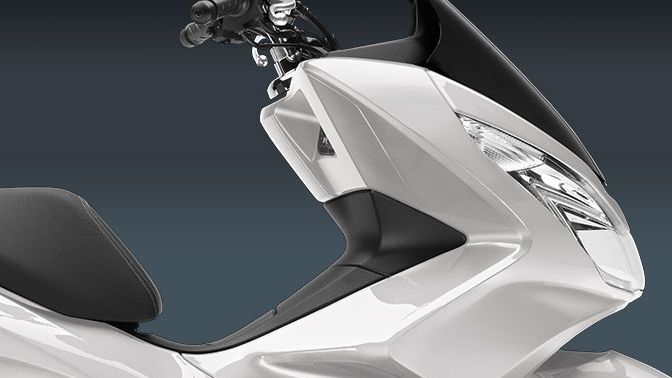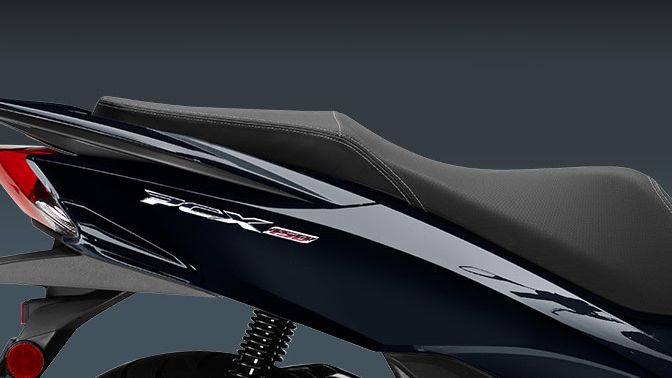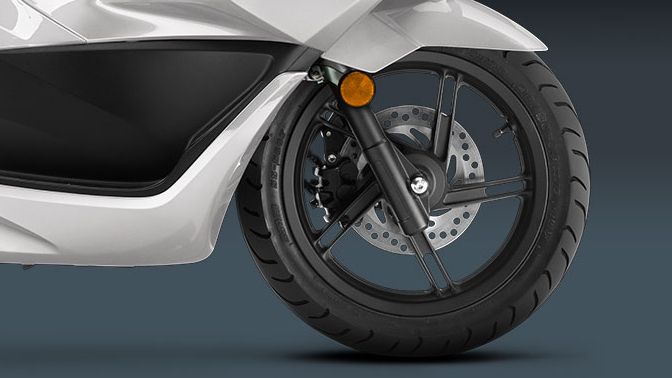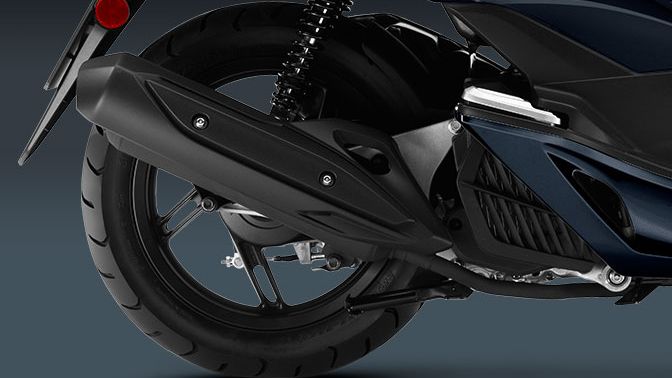After a revamp in 2015, the PCX150 from Honda->ke291 continues strong in the scooter->ke2256 market, now with a bigger engine, a sportier look and a larger capacity fuel tank. Originally developed, designed and manufactured in Thailand, the PCX was popular as a commuter bike->ke5324 that offered extra-value-added in luxury feel and performance. Marketed in Europe where riders appreciate scooters for their ease of use, the PCX gained popularity and Honda soon realized the reality of having a truly global model of scooter. Prior to 2013, the PCX came with a 125 cc engine and a 1.6-gallon fuel tank. With a make-over in 2013, the PCX125 gave way to the PCX150 and a new chapter in the globally produced Honda scooter was launched.
Continue reading for my review of the Honda PCX150.
2015 - 2018 Honda PCX150
- Make: Array
- Model: 2015 - 2018 Honda PCX150
- Engine/Motor: inline-1
- [do not use] Vehicle Model: Array
Design
Let's start with the new-in-2015 features. Along with an upgraded engine, the PCX150 got a bit of a make-over with new body panels to give it a sportier look more sport bike->ke631 than scooterish. To enhance that new look, the PXC150 got compact dual LED headlights -- in fact, lights all around including hazard lights -- to give greater visibility for you to see and be seen.
The new passenger seat is more comfortable, and weatherproof lockable underseat storage -- which is now spring-loaded so it stays open without holding it -- accommodates a full-face helmet, groceries or a full book bag. Also added in 2015, the scooter has an integral 12-volt adaptor for charging your electronics.
One more notable change from the 2015 revamp is a larger fuel tank. Out went the 1.56-gallon tank, replaced with a 2.1-gallon. Half a gallon may not seem like much, but at 100 mpg, that's an extra 50 miles, give or take. The tank mounts under the floorboard to keep the center of gravity low. This measure improves handling characteristics.
Instrumentation on the PCX150 includes the typical speedometer, odometer and trip meter. It does have a fuel gauge, which I always like to see, but it also has a clock and a fuel-consumption readout. Those are nice extras.
For ease of parking, the scooter comes with both a jiffy stand and a center stand. You can use whichever one better suits the parking spot; because let's face it, sometimes having the room to let the scooter lean just isn't there. While parked, you're protected with a theft deterrent ignition system cover and steering lock to make sure your scooter stays where you put it.
Chassis
Hydraulically dampened, 31 mm, telescopic forks float the front end on 3.9 inches of travel, and dual, coil-over shocks spring the rear and dampen the swing-mount drive unit with 3 inches of travel. You won't be jumping any tracks on this scooter, but you should be able to manage most reasonably maintained city streets with it.
The brakes even have a feature in common with Honda's flagship tour bike, the GL1800 Gold Wing->ke2108. Honda uses its Combined Brake System (CBS) to measure braking pressure and balance it between the front and rear binders for confident and safe braking.
A three-pot, hydraulic caliper binds a 220 mm disc up front with a drum brake in the back, a typical setup for scooters. The 14-inch wheels round out the rolling chassis, and they fall into the "ample" size range as far as scooter tires go, so I will call them sufficient for most urban environs.
Drivetrain
Now we come to what is arguably the most important update from the 2015 model year, the newly designed, 153 cc engine meant to replace the 125 cc scooter mill. This new mill comes with an integral liquid-cooling system for waste-heat management, and keeps things nice and compact by incorporating the radiator into the right-side half of the engine case.
The new engine comes with all sorts of space-saving features, to include the new-in-2015 ACG starter that pulls double duty as an alternator once the engine is running, and components redesigned to lay flat against the mill to keep the engine footprint small. PGM-FI induction control with an automatic enrichener manages the mix for easy starts and self-adjusting operation.
Though Honda declines to publish the numbers for the U.S. market, it claims a 13-percent output increase over previous air-cooled models, and the larger mill produces max power at a lower rpm for quieter, and more relaxed, cruising.
Enhanced even more in 2016, the 153 cc engine benefits from additional friction-reduction efforts on its innards, the result of which is better fuel economy. Engine power runs through the Honda V-Matic automatic transmission, so you can count on the typical twist-and-forget operation. The mill and transmission work together to provide an estimated 100 mpg, a fuel load that will last longer than your butt can at a stretch.
Pricing
MSRP on the 2018 PCX150 is $3,599, up just a wee bit over previous years. For 2016, the PCX150 came in Dark Candy Red or Steel Gray, which I think was an improvement over the black or white available in 2015, though for 2017 Honda went right back to boring old white, but added a nice dark pearl blue that is carried over into 2018. Honda offers a one-year transferable warranty on your PCX. An extended warranty is available through Honda Protection Plan.
Competitors
After batting back and forth whether to go head-to-head with an Smax->ke5459 from Yamaha->ke301 or a PCH150 from Lance, I decided to go with the Smax for its sportier look.
Looking at the two side by side, I am struck by the similarities. They both seem to follow an almost insect-like, alien flow. No doubt there are some aerodynamic considerations there, but the Smax creates more of a cockpit for the rider with its tall windscreen. The screen comes mounted on standoffs, so airflow up the backside of the screen relieves the vacuum and eases some of the buffeting effect.
As a result, riders can expect a more relaxing ride from the Smax if prolonged stretches at speed are part of your commute. Yamaha sticks to a more traditional look around the waist with a full step-through and flat deck, so the SMax comes with that extra little cargo space between the rider's feet.
There isn't much to choose between the two in the engine department. Sure, Honda just came out with a nifty new 153 cc mill, but the 155 cc Yamaha also runs a water-jacketed engine with fuel injection and electronic ignition, and both companies have a reputation for producing solid small motors. Red Riders do get a small victory in mileage; while the PCX150 claims 100 mpg, the SMax falls a little short at only 81 mpg, significant for engines with so much in common.
The stickers are almost close enough to make you suspect some vast scooter conspiracy of price fixing. Yamaha lets go of the SMax for $3,699, but Honda pared that down a little further with $3,599 for the '18s.
He Said
My husband and fellow writer, TJ Hinton, says, “A little too buggish for my taste, with a bit too much swoopage. I prefer my scooters to look like scooters, and at some point you have to ask yourself if you should be looking at buying a proper motorcycle instead when you lose the scooter-esque design characteristics. Sorry Honda, really not feeling it with this one.”
She Said
"I prefer the more traditional-looking scooters, not so much the sport-bike-wanna-be look, but the PCX150 is a nice little ride. Fuel economy is noteworthy, especially for a 153 cc engine. I put it head-to-head with the Smax, but for a scooter, I might actually prefer the Lance Soho->ke5340 that comes with 16-inch wheels."
Specifications
|
Drivetrain: |
|
|
Engine: |
liquid-cooled single-cylinder four-stroke SOHC; two-valve |
|
Displacement: |
153 cc |
|
Bore: |
58.0 mm |
|
Stroke: |
57.9 mm |
|
Induction: |
PGM-FI with automatic enrichment |
|
Ignition: |
Full transistorized ignition |
|
Compression Ratio: |
10.6:1 |
|
Transmission: |
Honda V-Matic belt-converter automatic transmission |
|
Chassis: |
|
|
Rake: |
27.0 degrees |
|
Trail: |
3.4 inches |
|
Suspension, Front: |
31 mm hydraulic fork; 3.9-inch travel |
|
Suspension, Rear: |
Twin shock, 3.0-inch travel |
|
Brake, Front: |
Single 220 mm disc with three-piston caliper and CBS |
|
Brake, Rear: |
Drum with CBS |
|
Tire, Front: |
90/90-14 |
|
Tire, Rear: |
100/90-14 |
|
Dimensions: |
|
|
Wheelbase: |
51.8 inches |
|
Seat Height: |
29.9 inches |
|
Details: |
|
|
Curb Weight: |
286 pounds |
|
Fuel Capacity: |
2.1 gallons |
|
Fuel Economy: |
100 mpg |
|
Model Id: |
PCX150 |
|
Warranty: |
One Year Transferable, unlimited-mileage limited warranty; extended coverage available with a Honda Protection Plan |
|
Colors: |
|
|
2015: |
Metallic Black, Pearl White |
|
2016: |
Dark Candy Red, Steel Grey |
|
2017/2018: |
Dark Blue Blue, Pearl White |
|
Price: |
|
|
2015: |
$3,449 |
|
2016: |
$3,499 |
|
2017/2018: |
$3,599 |


